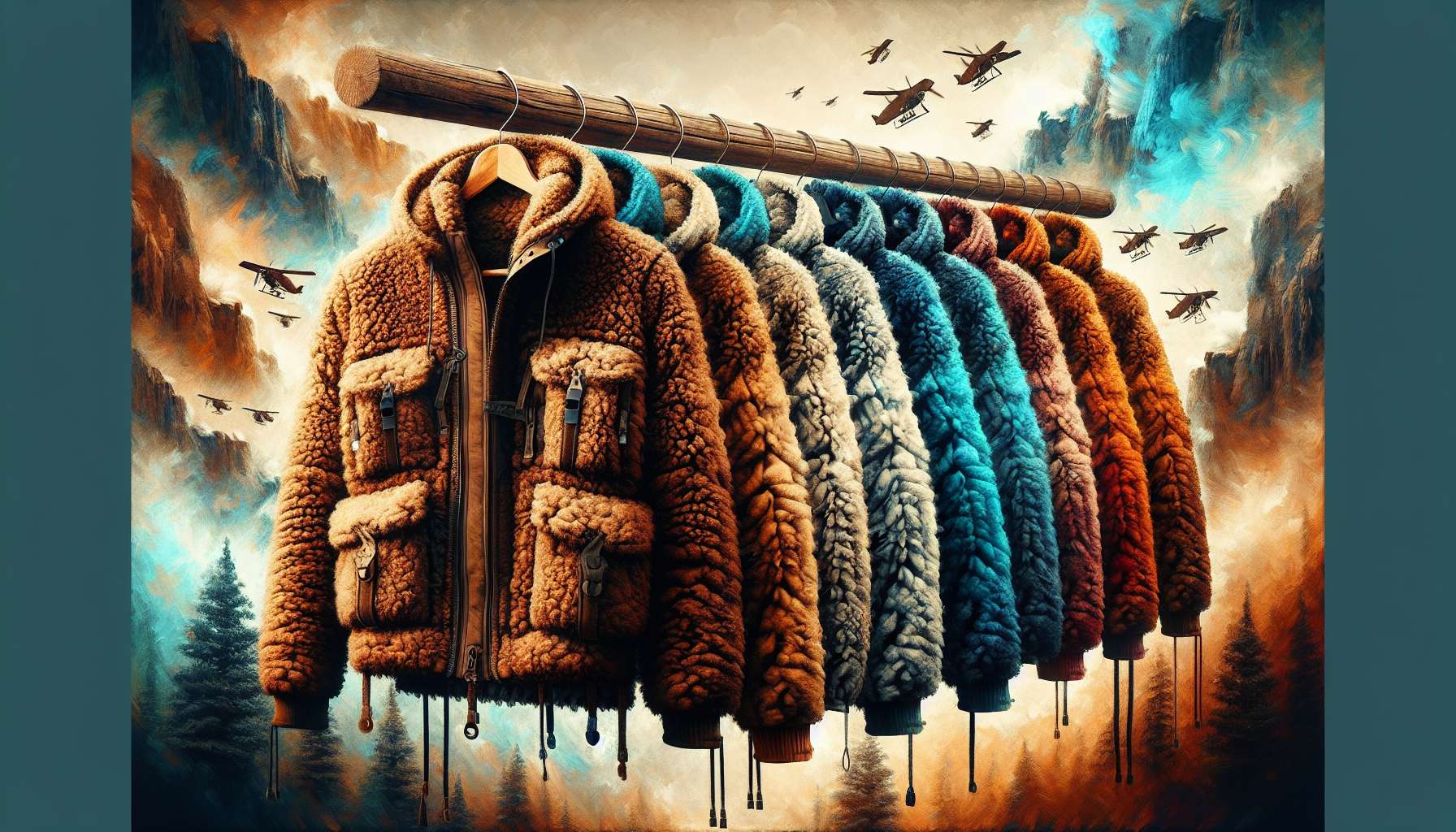The Ultimate Guide to Fleece Jackets
Welcome to the ultimate guide to fleece jackets, where we delve into the world of this versatile and beloved piece of outerwear. Fleece jackets have become a staple in many people’s wardrobes, offering warmth, comfort, and style in various settings. Whether you’re an outdoor enthusiast, a fashion-conscious individual, or simply someone looking for a cozy layering option, fleece jackets have something to offer for everyone.
In this comprehensive article, we will explore the history of fleece jackets, their construction and materials, the benefits of wearing fleece, different types of fleece jackets, care and maintenance tips, and the environmental impact of fleece production. So, grab your favorite fleece jacket, get cozy, and let’s dive into the world of fleece!
The History of Fleece Jackets
Fleece jackets have come a long way since their humble beginnings. The concept of fleece fabric originated in the 1970s when Malden Mills, now known as Polartec, invented synthetic fleece made from polyester fibers. This innovative material was designed to mimic the warmth and softness of wool while being lighter, more breathable, and faster drying. Fleece quickly gained popularity among outdoor enthusiasts, athletes, and everyday consumers looking for a comfortable and practical alternative to traditional wool garments.
Over the years, fleece jackets have evolved in terms of design, functionality, and performance. Today, you can find fleece jackets in a wide range of styles, colors, and weights, suited for different activities and weather conditions. From lightweight microfleece for mild temperatures to heavy-duty polar fleece for extreme cold, there’s a fleece jacket for every need and preference.
Construction and Materials
Fleece jackets are typically made from synthetic materials such as polyester, recycled polyester, or a blend of polyester and other fibers. The fleece fabric is created by knitting or weaving together the synthetic fibers to create a soft, insulating, and moisture-wicking material. Fleece jackets may feature different weights and thicknesses, with some designed for layering under a shell jacket and others meant to be worn as standalone outerwear.
One of the key benefits of fleece jackets is their ability to provide warmth without adding bulk. Fleece is known for its excellent thermal properties, trapping heat close to the body to keep you warm in cold conditions. Additionally, fleece is highly breathable, allowing moisture and sweat to evaporate quickly, so you stay dry and comfortable during physical activities.
The Benefits of Wearing Fleece
There are numerous benefits to wearing fleece jackets, making them a popular choice for outdoor adventures, everyday wear, and everything in between. Some of the key advantages of fleece jackets include:
- Warmth: Fleece jackets provide excellent insulation to keep you warm in cold weather.
- Comfort: Fleece is soft, lightweight, and non-restrictive, making it a comfortable choice for all-day wear.
- Breathability: Fleece fabric wicks moisture away from the skin, keeping you dry and comfortable during physical activities.
- Quick-drying: Fleece dries quickly, making it ideal for wet conditions or high-sweat activities.
- Durability: Fleece jackets are durable and long-lasting, standing up to repeated wear and washing.
- Versatility: Fleece jackets come in a variety of styles and weights, suitable for different seasons and activities.
Different Types of Fleece Jackets
When it comes to fleece jackets, there are several types to choose from, each offering unique features and benefits. Some of the most common types of fleece jackets include:
Microfleece
Microfleece is a lightweight and versatile fleece fabric that is ideal for layering under a shell jacket or wearing on its own in mild temperatures. Microfleece offers excellent warmth-to-weight ratio, making it a popular choice for outdoor activities like hiking, camping, and skiing.
Polar Fleece
Polar fleece is a thicker and warmer fleece fabric that provides superior insulation in cold weather. Polar fleece jackets are designed for maximum warmth and comfort, making them perfect for winter sports, snowshoeing, or everyday winter wear.
Windproof Fleece
Windproof fleece jackets feature a built-in membrane or coating that blocks wind and repels water, providing added protection in harsh weather conditions. Windproof fleece is ideal for activities like mountaineering, cycling, or running in windy and wet conditions.
Hybrid Fleece
Hybrid fleece jackets combine fleece with other materials like softshell or insulated panels to enhance performance and versatility. Hybrid fleece jackets offer the best of both worlds, providing warmth, breathability, and weather protection in one garment.
Care and Maintenance Tips
To keep your fleece jacket in top condition and prolong its lifespan, it’s essential to follow proper care and maintenance practices. Here are some tips for caring for your fleece jacket:
- Wash your fleece jacket in cold water on a gentle cycle with mild detergent.
- Avoid using fabric softener or bleach, as these can damage the fleece fibers.
- Air dry your fleece jacket or tumble dry on low heat to prevent shrinking and pilling.
- Avoid ironing or dry cleaning your fleece jacket, as high heat can melt the synthetic fibers.
- Remove any pills or fuzz balls from your fleece jacket using a fabric shaver or lint roller.
Environmental Impact
While fleece jackets offer many benefits in terms of performance and comfort, they also have environmental implications due to the use of synthetic materials in their production. Polyester, the primary material used in fleece fabric, is derived from petroleum and requires a significant amount of energy and resources to manufacture. Additionally, microplastics shed from fleece garments during washing can contribute to ocean pollution and harm marine life.
As consumers become more aware of the environmental impact of their clothing choices, sustainable alternatives to traditional fleece are emerging. Recycled polyester fleece, made from post-consumer plastic bottles, is a more eco-friendly option that reduces the demand for new petroleum-based materials. Some brands also offer organic cotton fleece or fleece made from other natural fibers to minimize the environmental footprint of their products.
Expert Opinions
We reached out to outdoor apparel experts for their insights on fleece jackets and their recommendations for choosing the right fleece for different activities:
“Fleece jackets are a versatile and essential piece of outdoor gear, providing lightweight warmth and comfort in a variety of conditions. When selecting a fleece jacket, consider the weight, breathability, and weather resistance of the fabric to ensure it meets your needs.” – Sarah, Outdoor Gear Specialist
Conclusion
To wrap things up, fleece jackets are a versatile and practical outerwear option that offers warmth, comfort, and performance benefits for a wide range of activities. Whether you’re hitting the trails, running errands, or lounging at home, a fleece jacket can keep you cozy and stylish in any situation. By understanding the history, construction, benefits, and care of fleece jackets, you can make informed choices when selecting the perfect fleece for your needs.
So, the next time you’re getting dressed for a chilly day or planning your next outdoor adventure, don’t forget to reach for your trusty fleece jacket. With its unbeatable combination of warmth, breathability, and comfort, your fleece jacket will quickly become your go-to layer for all your cold-weather outings.
Now, go ahead and explore the world of fleece jackets with confidence, knowing that you have all the knowledge you need to make the most of this beloved piece of outerwear. Stay warm, stay cozy, and embrace the comfort of fleece!




